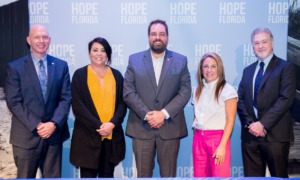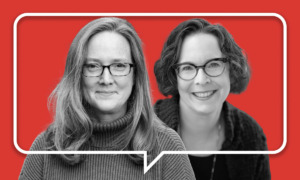For all of us who work in youth development, it’s good to keep our eyes on the ball. The ball is providing the developmental supports that young people need to succeed.
We have a large vocabulary to describe these supports. The five promises articulated by America’s Promise provide one set of useful nomenclature: caring adults; safe places and constructive use of time; a healthy start; effective education for marketable skills and lifelong learning; and opportunities to help others.
A recent report released by America’s Promise documents how well the United States is delivering these supports to young people. Called “Every Child, Every Promise,” the report is based on interviews with nationally representative samples of 2,000 twelve- to 17-year-olds, 2,000 parents of these youth, and 2,000 parents of 6- to 11-year-olds. The research team was composed of social scientists at Search Institute and Child Trends. Gallup conducted the interviews. (For a copy, go to http://www.AmericasPromise.org, or http://www.search-institute.org.)
Several findings reinforce the youth development messages that many of us try to articulate in our work. One is that the more developmental supports a youth has, the better. The odds for positive outcomes dramatically favor young people who experience four or five of the promises.
Those outcomes include school grades, school attendance, social competence, overall physical health, sense of purpose, frequency of volunteering, safe sexual behavior and avoidance of violence.
This conclusion holds true for all subgroups of youth: African-American, Hispanic and white youth; low, middle- and upper-income families; males and females.
A related finding is that the number of promises a young person experiences predicts outcomes significantly better than do such traditional social location categories as race, ethnicity, income, gender and parental education.
Such results reaffirm core axioms of youth development work. But there’s another finding that should give our nation pause. It is the national estimate of how well America is keeping its promises. Or, if you prefer, how well America is delivering critical developmental supports to its young.
It is not a pretty picture.
More than two-thirds of 6- to 17-year-olds receive three or fewer of the five promises. The report estimates that 31 percent receive four or five promises, 48 percent receive two or three, and 21 percent receive zero or one.
Putting together the last two percentages yields the conclusion that 69 percent of our young are being developmentally shortchanged. How many young people fall into this category of receiving three or fewer promises? Thirty-four million, out of our nation’s approximately 49 million school-aged children (ages 6 to 17). African-American and Hispanic youth are more likely than white youth to have few or none of the promises.
These findings raise two clear challenges. One is the quality of development for our young people. We must raise all of our kids to be promise-rich. We have a long way to go.
Another involves developmental equality. This is a critical issue of social justice.
So what needs to happen in America? Yes, it’s important for federal policy to take youth development seriously. It is also a community issue. Somehow, we’ve got to figure out how to transform developmental settings – such as schools, neighborhoods, families and congregations –into places where a focus on developmental supports is natural and omnipresent. This is particularly true for vulnerable and disconnected youth.
Focusing on policies and communities is a great start. The major source of developmental supports, however, is vested in our citizens and their capacity to develop sustained relationships with young people. Relationships are the major conduit through which flow the nurture of skills, the transmission of wisdom, the invitation to contribute and the encouragement to lead. Somehow, we must figure out how to mobilize the nation.
When it comes to youth development – if you breathe, you are on the team.
What does all this mean for youth workers? Let me suggest two strategies that could move the needle.
First, help your agency or organization become strategic about providing its youth with multiple developmental supports. Remember, the more supports, the better. Intentionality about delivering multiple supports is critical. And it may take some focused planning to ensure that all of your work with young people is aligned with a comprehensive understanding of developmental supports.
Second, spread the word about the “Every Child, Every Promise” report in your community. Take any opportunities to encourage not only other youth-serving organizations, but also congregations, schools, families, neighborhoods, employees and citizens to examine their lives through the lens of the five promises, and to identify new tactics for enhancing the quality and equality of development.
Peter Benson is president of Search Institute, based in Minneapolis. http://www.search-institute.org.






























